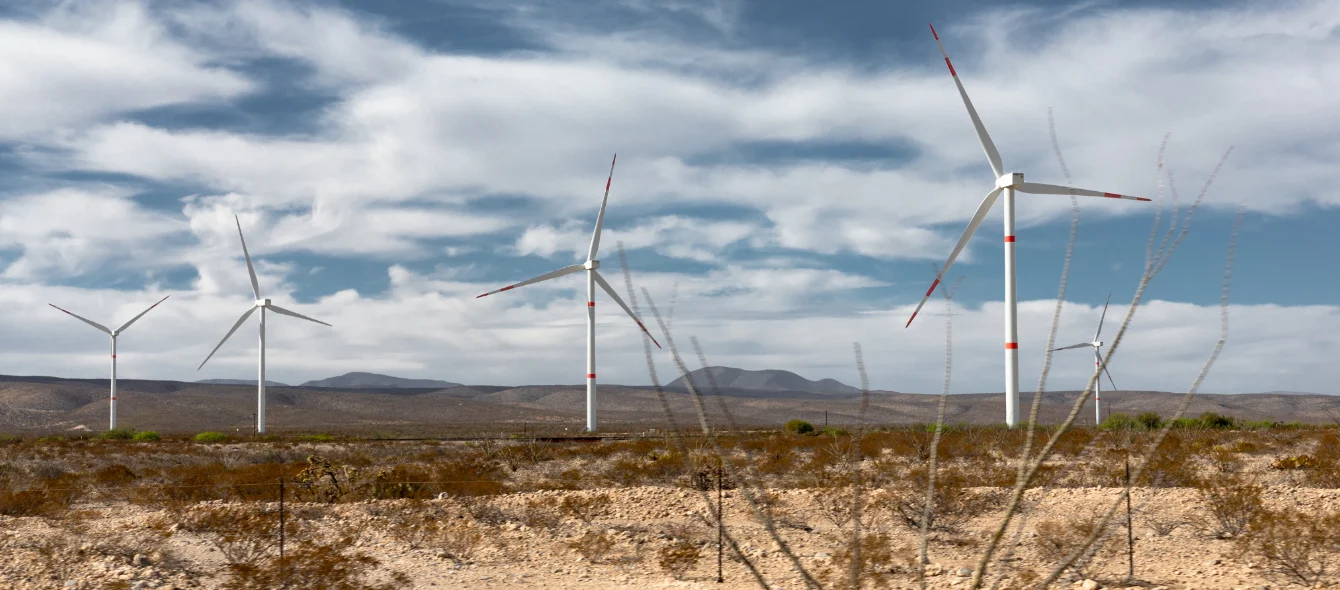Wind power in Mexico saw its largest annual expansions on record in the period 2018-2020, with capacity almost doubling from 4.2 GW in 2017 to 8.1 GW in 2020. Solar power also experienced a boom, jumping from 674 MW to 5.6 GW over the same period.
Mexico has no shortage of renewable energy resources and is notable for some of the cheapest onshore wind farms to date, the lowest so far coming in at just $18/MWh. A study by the International Renewable Energy Agency (IRENA) estimated the country’s possible onshore wind resource at 50 GW, although some later studies suggest as much as 70 GW, while the solar potential is literally off the scale at 5,000 GW.
Offshore wind also offers huge possibilities. The World Bank puts Mexico’s technical potential for offshore wind at 869 GW, of which 402 GW would be traditional fixed-base installations and a further 457 GW floating offshore wind.
While this is more than enough to power the country many times over, IRENA estimates that Mexico could also economically install 27 GW of hydro power from a theoretical potential of 49 GW. Currently, hydro capacity stands at 12.6 GW. Geothermal and biomass could also make smaller but significant contributions to the national generating mix, if developed.
The jump in wind and solar capacity in 2018-2020 shows that a good pace of expansion can be achieved, given the right support, but the project pipeline is much less certain. According to AMDEE, the Mexican Wind Energy Association, the country could double its wind capacity within five years, but currently faces too much regulatory uncertainty.
Oil and gas legacy
Mexico has long been in important oil producer and the energy sector has traditionally been dominated by large state monopolies focussed on oil and gas. However, Mexico’s oil output fell below 2 million b/d in 2019 for the first time since 1979, and its surplus – the balance between production and consumption – dropped to just 220,000 b/d.
Gas production is also on a long-term downward trend, having fallen from 52.5 billion cubic meters (Bcm) in 2013 to 30.1 Bcm in 2020. In contrast, gas consumption has been rising, hitting 88 Bcm in 2019 and staying strong in 2020 at 86.3 Bcm. Gas-fired power is the backbone of the Mexican electricity system, accounting for almost 60% of generation last year.
Mexico makes up the shortfall in its own gas production by importing pipeline gas from the US and LNG. The country has, in fact, been one of the primary beneficiaries of the US shale boom. US natural gas exports have ballooned over the last decade, rising to hit a record on some days in June this year of over 7 billion ft3/d.
US natural gas exports to Mexico (in million ft³)
source: U.S. Energy Information AdministrationThe huge increase in US pipeline gas exports has squeezed out LNG from north and central Mexico to such an extent that developers are looking to build liquefaction plants to export US gas as LNG from Mexico’s Pacific coast.
However, while an avid consumer of natural gas, Mexico also still uses fuel oil in its generation mix, another element of its oil and gas legacy. With demand low for high sulphur fuel oil internationally, recent reforms by the Mexican government seem designed to bolster domestic demand for the fuel in the electricity sector, thereby providing support for the refining operations of the state-owned oil company Pemex.
Energy reform
This is a major reversal from the policies of former governments. Mexico in the last decade introduced major reforms to its energy sector designed to reduce the influence of the state and encourage private-sector investment. The Energy Transition Law, passed in 2015, was the final part of the reforms, one which encouraged decarbonisation and the adoption of renewable energy.
The law set a target of 35% clean electricity generation by 2024, including nuclear. It introduced power auctions and clean energy certificates, which together triggered a wave of largely private-sector investment in wind and solar, the fruits of which are evident in the recent jump in wind and solar capacity.
However, with a change of government in 2018, policy has swung back towards the state sector, threatening the pipeline of new renewable energy projects. The Mexican Congress in April passed an amended Electricity Industry Law. Amongst other measures to strengthen the position of state-owned generators is a change from dispatching electricity based on price, which favoured renewables, to prioritising state-owned generators, regardless of price. This has the effect of boosting fuel oil and coal-fired generation from state companies at the expense of both renewable energy and gas-fired power plants.
The new Electricity Industry Law has been challenged domestically and may also contravene bilateral investment treaties with other countries, whose companies have invested in the Mexican electricity sector. However, even if the law fails to stand, the government’s direction has created huge uncertainty for new investment in the renewable energy sector. And with momentum stalling, the target set in the 2015 Energy Transition Law now looks heavily at risk.
